Finishing well
We are coming to the end of a dairy development project in Pakistan investigating approaches to improve the extension system to help smallholder dairy farmers with their farm productivity and profitability. After eight years working in Pakistan, with all its challenges, joys and learning experiences – I can proudly say (and know) that we have done a fantastic job. Working in field trials, coordinating farmer discussion groups, maintaining interest and encouraging adoption is difficult in any country. However, in Pakistan with the additional challenges of logistics, security, politics, an inexperienced field team and literally millions of farmers – it was most definitely a tough gig and I am proud of what our team achieved.
What is arguably an even tougher gig however, is to try communicating and sharing the project’s outcomes, impacts and benefits to the wider dairy community of Pakistan. It’s not just about making them aware of what we did, it’s also about convincing them that the approach we took was something that could be replicated and scaled out to even more of the smallholder farmers throughout the country.
Our ASLP Dairy Project team were faced with this exact challenge in just the last few months. With the end of the project imminent (in Dec 2015), we were tasked with running a Final Forum to share our approach, results and impacts with other donors, Government officials, NGOs, researchers and the private sector. This is a stock standard undertaking at the end of any project. However, it is also one that fills me with dread; not only from the point of preparing and organising one, but also from the point of view of the audience. I have been to many project or scientific forums in my somewhat short career. Perhaps I have a short attention span or perhaps I am not the attentive scientist I should be, but either way I tend to find most (not all!) of these events a little bit…you know…boring. They tend to include presentation after presentation of research stories somewhat similar, sometimes interesting and in someway applicable to my role, but despite this, I just can’t bring myself to stay tuned for the day.
With this in mind – and assuming that at least a few other people struggle in the same way, we decided to test our team in Pakistan. The challenge was simple:
“100 Pakistani officials from academia, the Government, donors, NGOs and the private sector walk into a big hall at 9am. Assume they are bored when they arrive. You have to keep them engaged until 4pm, whilst also clearly sharing our extension approach & convincing them that it was effective and worthwhile replicating”
So, what did we do:
Step 1. Think about it.
We had to outline what messages we wanted to get across and how we wanted to do it. To do this we ran a few brainstorming sessions with team members from both Australia and Pakistan. It was similar to one we had observed with CSU and Professional Assistance for Development Action (PRADAN) in Delhi using single pieces of paper for each single idea (thanks Gavin Ramsay and his team for this technique). Using this process any idea could be given some traction and each piece of paper could be moved around the table/floor (see picture below) to try and group ideas/themes. This process helped us list and prioritise the themes and ideas we wanted to share on the day. Furthermore, it got the team thinking about different ways to present the material.
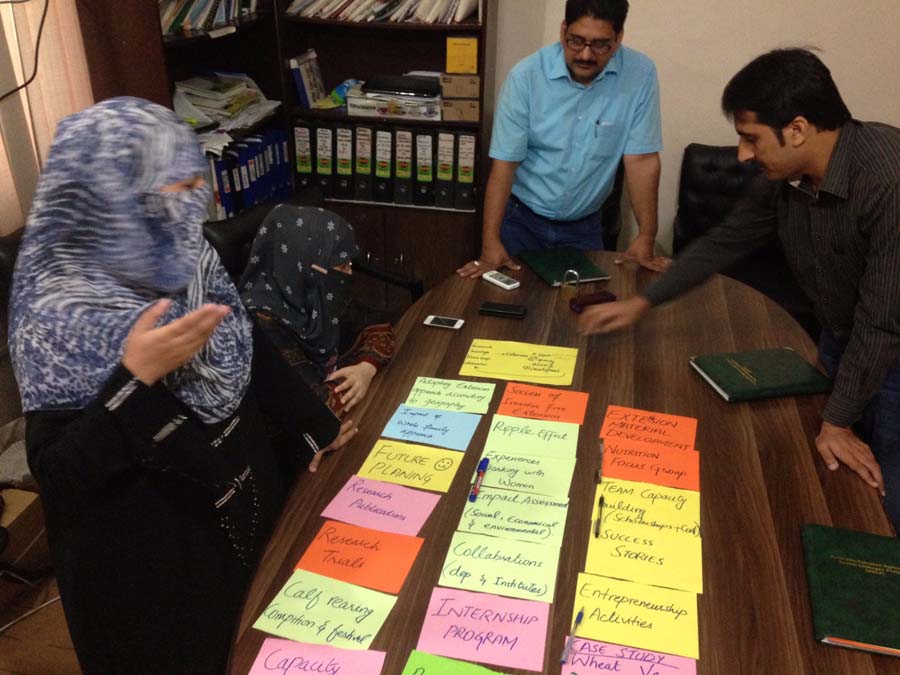
Picture: Brainstorming ideas and getting them in order
Step 2. Come up with (realistic) schedule for the day.
Our team put a lot of thought and effort into playing out the day and determining how we could run it most effectively. In doing this we considered the attendees, when people will arrive/leave, when they will get hungry, when are they likely to lose interest and how we could ensure we clearly got our message across. The schedule we came up with is listed below, it wasn’t perfect, but it worked for our situation.

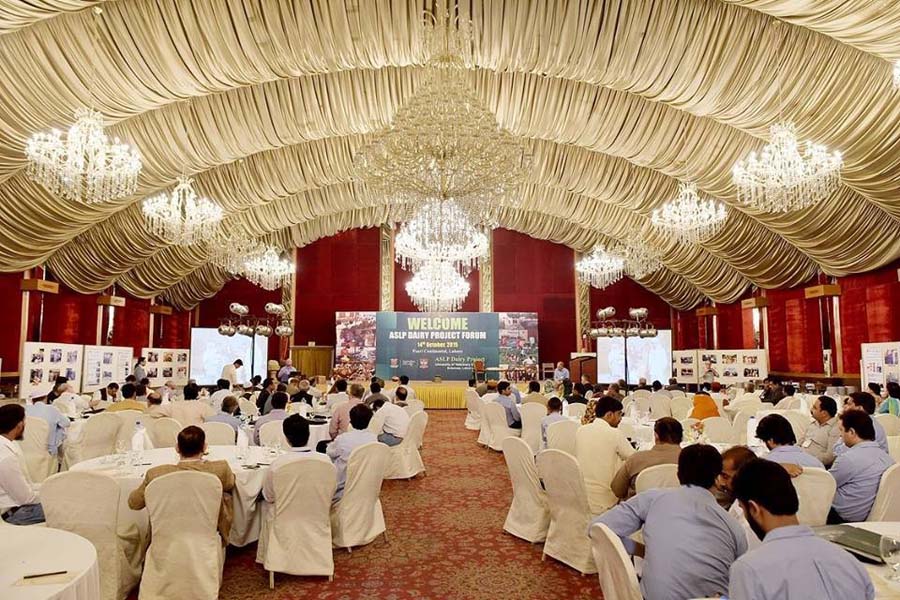
Picture: The forum location, complete with research posters & pictures surrounding participants to showcase the project’s breadth of activities.
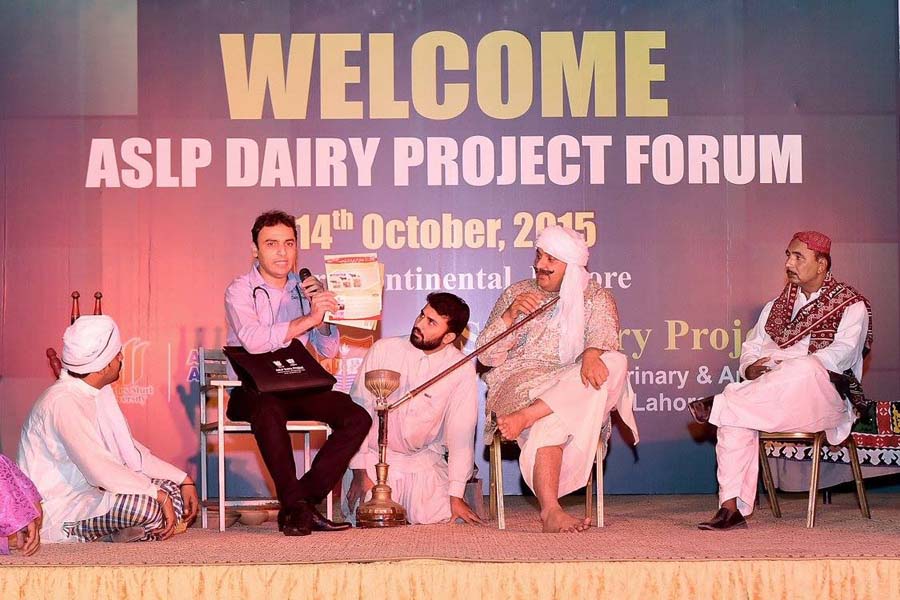
Picture: A snapshot of the role play which set up the scene of a typical dairy farm and the extension approach our dairy team took.
Step 3. Show up, be prepared, look sharp and smile.
Although these last few steps seem somewhat simplistic, carrying through with these whilst also trying to prepare posters, interactive presentations, organising food and logistics can be more difficult than we expect. The team was mindful to practise their individual booth presentation numerous times to refine their talk to less than 15 minutes to allow plenty of time for questions. Furthermore, we took particular care to really be aware that the whole team were on time and ready to help out well before the start and that we were all dressed looking like a team. We even had shirts and vests (for the women) stitched with an ASLP brand so participants knew who to direct questions to.
Lastly, it was the role of each team member to engage with participants throughout the day. Hence, having a friendly smiling face is imperative to make everyone feel welcome. We were very fortunate and happy to have such a phenomenal young team of researchers to drive our research program and they showed that at the final forum they could also step up and present in a challenging situation. Well done to them for their efforts in running an outstanding and engaging forum. We have been told it was one of the best (if not the best) final project forum senior ACIAR staff have seen.
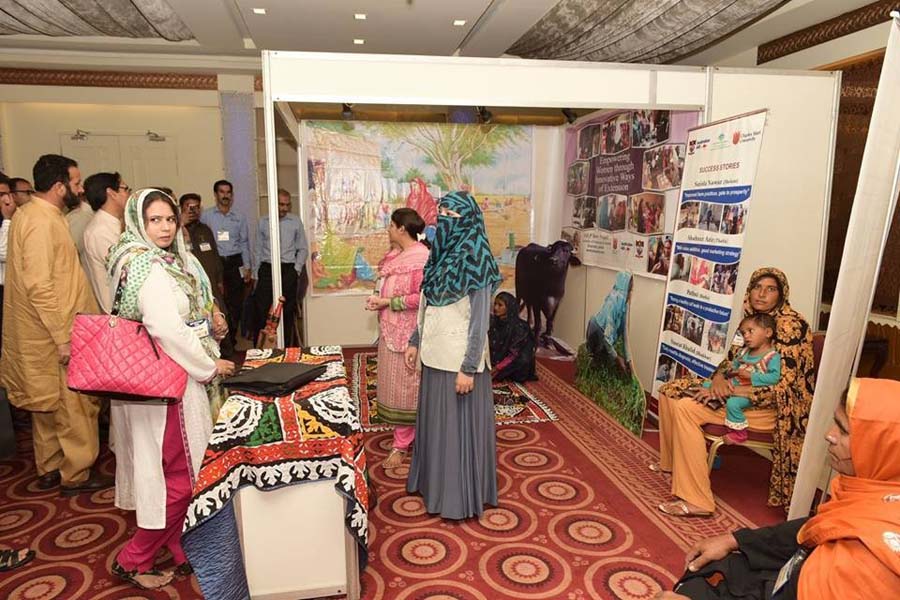
Picture: The booth showcasing the efforts of the women in our project team tackling ‘Women empowerment through innovative extension’.
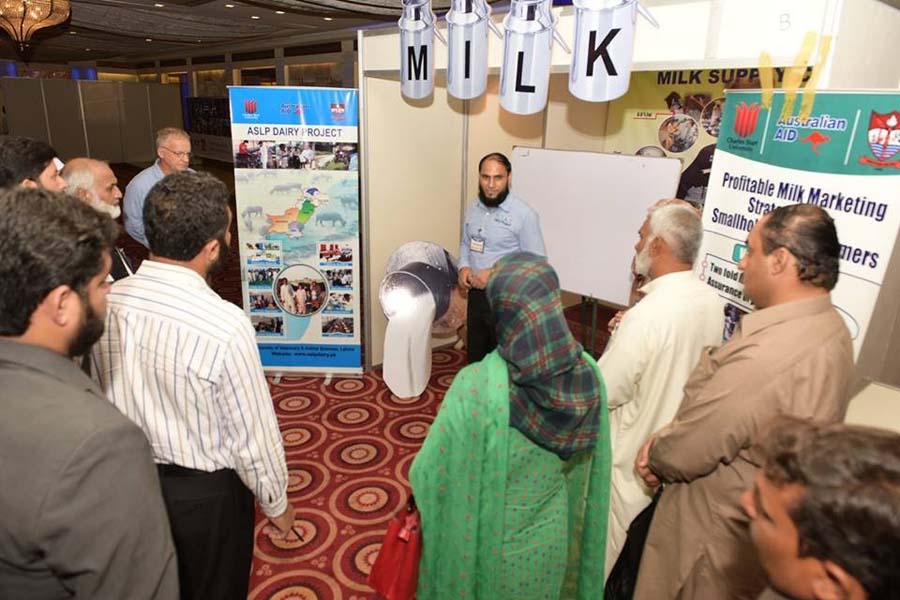
Picture: Milk marketing & quality booth including an interactive whiteboard presentation highlighting issues in the milk value chain.


